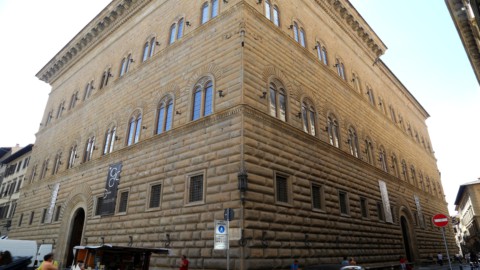The programming of the Florentine Palazzo Strozzi Foundation continues to propose exhibitions for the enhancement of the artistic heritage of Florence alongside contemporary art exhibition projects in a prolific short circuit between ancient and modern. After a successful 2017 – thanks to the presence of a heavyweight like Bill Viola, who staged his electronic Renaissance attracting over 100 visitors – the historic Florentine palace is once again offering a varied and high-quality season this year.
Until July 22, visitors will be able to retrace the journey through Italian art, politics and society between the Fifties and the protests of Sixty-eight thanks to the selection of 80 works among which the names of Renato Guttuso, Lucio Fontana and Michelangelo Pistoletto stand out. It is an artistic itinerary which, for the first time in Italy, brings together the most emblematic works of the cultural ferment of post-war Italy up to 1968. Twenty years in which not only the economic miracle of the Belpaese took place, but also an artistic revolution which tended towards new forms, materials and languages.
Alongside the historical reinterpretation of those years, the palace symbol of the Florentine Renaissance also offers elements of rupture and contemporary provocation. In fact, until 26 August the great protagonists of the city's artistic stage are the two monumental 20-metre-high slides located inside the courtyard of Palazzo Strozzi. In fact, from 19 April The Florence Experiment curated by the artist Carsten Holler and the scientist Stefano Mancuso will be staged. The fascinating installation aims to study the relationship and interaction between plants and human beings, thus stimulating a new ecological awareness. Every week some visitors tackle the slide carrying a bean plant with them which is immediately handed over to the team of scientists who analyze its "reaction" to the descent. The second part of the experiment instead takes place in two small rooms: in one a horror film is projected, while in the other visitors see comedy skits. The two different types of chemical compounds emitted by the spectators are conveyed on the facade of the Palace where they influence the growth of climbing wisteria plants arranged for the occasion.
The same mix of ancient and modern will be proposed again in the programming of the next exhibitions, presented on Thursday 31 May at the headquarters of the Palazzo Strozzi Foundation, by Artuso Galansino, the general director awarded by the prestigious magazine "Il Giornale dell'arte" as best director of the year 2017.
The protagonist of 2018 will be Marina Abramovic on stage from 21 September to 20 January 2019 with a retrospective of over 100 works that will offer an overview of her career. The exhibition, as required by the caliber of the artist, will not be traditional and static: it will offer videos, photos, installations and live re-runs of famous performances by her through a group of artists. For the first time Abramovic, one of the leading exponents of contemporary art, will be confronted with a historical exhibition space characterized by Renaissance architecture.
Following this, Palazzo Strozzi will offer another dive into the past with an exhibition dedicated to the masterpieces of Andrea del Verrocchio, the master of Leonardo da Vinci and one of the greatest masters of the fifteenth century (from March to July 2019).
During the presentation, the director Galansino assured that the artistic proposal of Palazzo Strozzi will remain calibrated on experimentation between innovation and tradition, with an eye to the economic sustainability of the complex. In 2017, proceeds amounted to 6,8 million, of which 2,6 million from tickets and bookshops, 1,6 million from public contributions and another 2,6 million from private individuals. Another important result is the economic impact on the Florentine area: according to the annual study prepared by The Boston Consulting Group, the impact of the Foundation amounted to 33 million euros.
“Our exhibitions – commented Galansino – bring quality tourism from all over the world, stimulate international debate due to their originality and finally can also boast positive effects for the whole city of Florence”.





